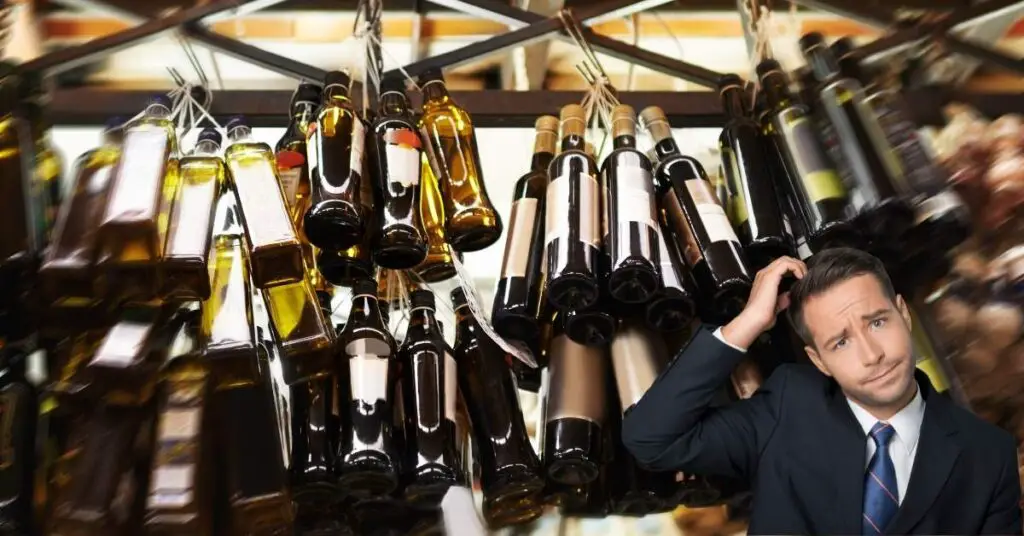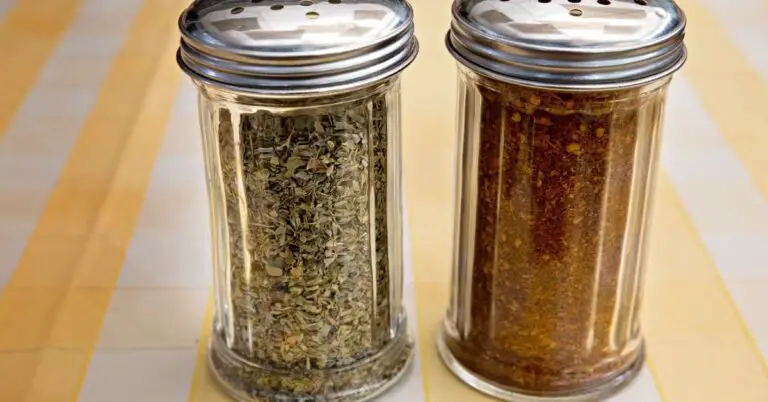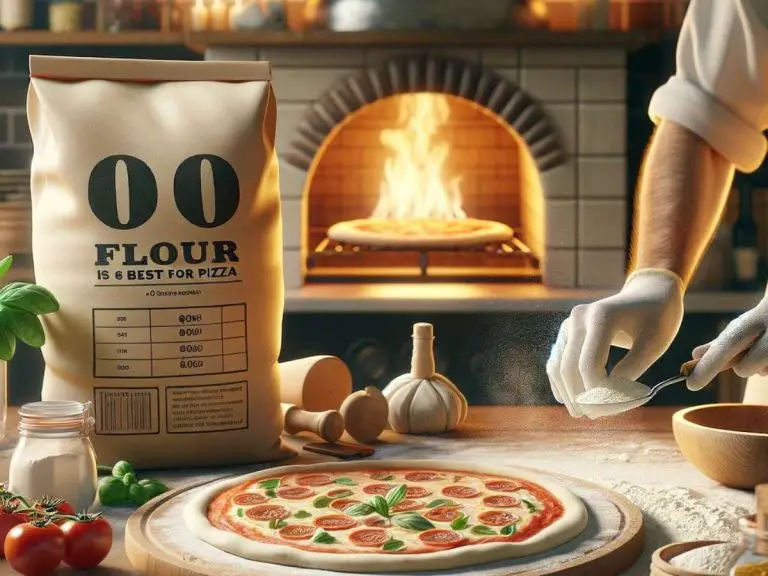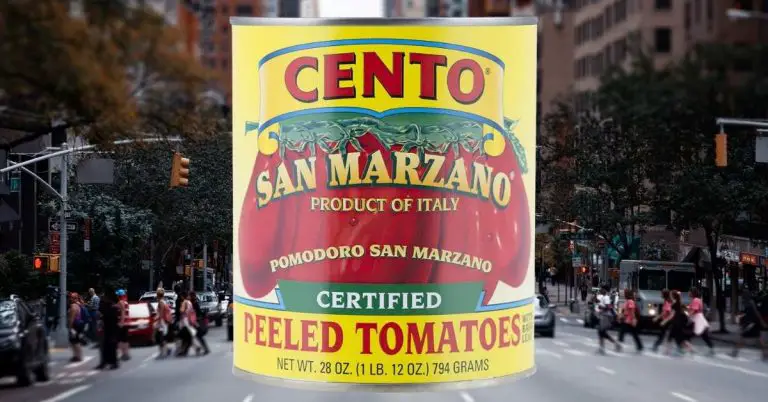How To Choose Olive Oil – Pick The Best Olive Oil For Your Money Every Time
Extra virgin olive oil is one of the workhorses of my kitchen, and perhaps yours as well. I use it for cooking, in sauces and drizzled on everything from salad to pizza. This is why knowing how to choose the best olive oil is such an essential skill for everyone who uses this amazing and versatile ingredient.
When choosing the best olive oil, I always look for a dark bottle as light degrades olive oil quality faster than anything else. I also always look for an olive oil that’s been pressed at a relatively recent date because olive oil doesn’t age well. Finally, I only buy cold-pressed extra virgin olive oil, which means the olive oil is pure and unprocessed.
But there’s more to choosing the best olive oil than simply finding the darkest bottle with the most recent pressing date. Let’s dig into what makes for a good quality olive oil and how you can figure out which ones at your local market are the best.

Light Degrades Olive Oil’s Quality Faster Than Anything
When searching for the best olive oil on your local grocery store’s shelves, remember that light is one of the worst enemies of good olive oil. This can come as a surprise because many brands of olive oil, even relatively expensive ones, like to show off the beautiful green color of their olive oil in clear bottles.
A clear bottle is a huge warning sign to stay away from that particular brand because clear bottles allow sunlight to reach the olive oil which greatly reduces its quality.
It all comes down to something called the “peroxide value”. Without delving too deeply into a chemistry lesson, the peroxide value is basically used as a way of measure the state of oxidation of fats and oil. The amount of oxidation in an olive oil is closely linked to how quickly the oil will lose quality or go rancid.
In a 2012 study by the Australian Government, it was found that the peroxide value of olive oil stored in a dark place “decreased at a linear rate throughout the storage period”. In other words, the olive oil exposed to light caused increased oxidation which damaged many of its core components and reduced its quality and taste.
Light exposure also affects the amount of “pyropheophytins” that are present in an olive oil. Pyropheophytins are a compound that comes from the breakdown of chlorophyll.
As you probably already know, chlorophyll is something that’s present in all plants that give them their green color. Chlorophyll is also what gives olive oil its deep green color, and when it interacts with light it causes the chlorophyll to breakdown and produces pyropheophytins as a result.
According to this same 2012 Australian study, exposure to high temperatures and light, even for short periods of time, greatly increases the presence of pyropheophytins which makes it a fairly predictable method for determining the age and level of degradation of an olive oil.
Of course, all olive oil comes from different parts of the world using different kinds of olives. This causes variations in the amount of chlorophyll naturally present in the olive oil, so the presence of pyropheophytins cannot be used alone to age an olive oil. But this study does help illustrate the importance of keeping your olive oils out of the light as much as possible.
More pertinent to you as a simple consumer, these studies illustrate the importance of finding an olive oil that is protected from heat and light. And you have to think beyond the light or heat at the grocery store or in your kitchen; remember that your bottle of olive oil has likely taken a journey across a continent, or even an ocean, before it gets into your hands. You really have no way of knowing what kind of shipping and storage methods were used or what kind of degradation has occurred during that time.
This is why the kind of container used to store the oil is your best bet in determining which olive oil has retained most of its quality during its long journey to you. If the bottle is made of a dark glass, or completely covered, it has the best chance of resisting damage to heat and light even if the shipping company or grocery store left it out and exposed for brief periods of time. I only ever buy olive oil in dark bottles or, covered tins, for this reason.
Always Buy Extra Virgin Olive Oil
When you go to the olive oil section of your local market, you’ll find lots of different types of olive oil available – from pure, to light to extra virgin. This can often make picking out the best kind of olive oil a bit confusing.
The best kind of olive oil for most cooking purposes is extra virgin olive oil, sometimes referred to as “EVOO”. Extra virgin olive oil is the best because it’s the least processed kind of olive oil. This means extra virgin olive oil has the best flavor as well as the most health benefits like antioxidants and vitamins. This are the big reasons why I only buy extra virgin olive oil for most of my cooking needs.
When you understand the difference between extra virgin and other kinds of olive oils, it’s easy to see why it’s the best.
If you take an olive in your hand and squeeze it, the juice that comes out is extra virgin olive oil. You’ve probably seen videos of people stamping mounds olives with their feet to release the oil – this is how most extra virgin olive oil was made traditionally and methods like this are what makes it the least process kind of oil.
Today, most olive oil is extracted using a machine, but the core principles remain the same. Extra virgin olive oil is made from the pulp and juice that’s released from olives naturally on the first squeeze. All extra virgin olive oil is “cold pressed” as well, which means it wasn’t subjected to high heat to release more oil from the olives. When high heat methods are used, it degrades the quality of the olive oil and releases more inferior oil from the olives, which is not what we want.
| Olive Oil Type | Description |
|---|---|
| Extra Virgin Olive Oil | Extra virgin olive oil is the purest, least process kind of olive oil. Extra virgin olive oil is made by cold pressing raw olives and extracting the oil from the pulp and has the highest nutrient and flavor content of any type of olive oil. |
| Virgin Olive Oil | Virgin olive oil is very similar to extra virgin olive oil and is extracted using the same methods. However, virgin olive oil has a higher amount of acidity and a somewhat less fruity taste. For these reasons, this kind of olive oil is rated as “virgin” and is therefore very high quality but not as desirable as extra virgin. Virgin olive oil is not generally available for sale in North America. |
| Refined Olive Oil | Refined olive oil is extracted from lower quality olives using heavily processed methods under high heat. This makes it possible to get more oil out of each olive, but the resulting olive oil tastes inferior and has few health benefits. I don’t use refined olive oil for certain kinds of cooking and frying. |
| Light Olive Oil | Light olive oil another common name for refined olive oil. It’s extracted from lower quality olives and produces a lower quality oil. One of the benefits of light olive oil is that it’s cheaper than extra virgin and has a lower smoking point which makes it ideal for cooking and frying. |
| Pure Olive Oil | “Pure” olive oil is a bit of a misnomer because it’s one of the least pure forms of olive oil. You may also find it labeled as “regular” olive oil, or sometimes simply “olive oil” without any reference to “extra virgin”. Pure olive oil is usually a blend of inferior olive oils mixed with a small amount of extra virgin olive oil to improve the taste. I generally don’t bother with “pure” or “regular” olive oil. |
| Olive Pomace Oil | When olives are first pressed the oil produced is called “extra virgin” olive oil. When chemical solvents are applied to the leftover pulp, an additional 5-8 percent of olive oil is extracted. However, this oil is not like other olive oil types in terms of taste, texture or health benefits. In fact, some pomace olive oil can actually be dangerous if purchased from irresponsible producers. For these reasons, beware of anything labeled as pomace olive oil – I would never use it myself. |
Look At The Pressing Date To Find The Freshest Olive Oil
As with most things derived from fruit, olive oil doesn’t improve with age.
Most reputable olive oil makers will have a “pressing” date somewhere on the bottle. This date lets you know when the olives were pressed and the oil was extracted. You want to choose an olive oil with the most recent pressing date to ensure your oil is as fresh and tasty as possible. Try to find a bottle that has been pressed within the last 12-18 months, or earlier if possible.
However, be careful to distinguish between a “pressing” date and a “bottled” date. The pressing date indicates when the oil was extracted, while the bottling date only tells you when that oil was put into a bottle. For all you know, the oil was sitting around in a vat for years before it was bottled. This is why the pressing date is so important, assuming it’s a reputable brand you can trust.
Alternatively, you may see a “harvest” date listed on the bottle, which tells you when the olives were harvested. This is equally useful as the “pressing” date because either one tells you how long the olives or oil have been around before they were made into oil and put into a bottle.
Another date to watch out for the expiry or “best before” date. In fact, in many cases this might be the only date you see printed on bottles at your local store. This isn’t as precise as a pressing or harvest date, but it gives you a good idea of when the olives were pressed and harvested. By Italian law, olive oil expires after 18 months. Of course, this length of time will vary from country to country, but if your olive oil says it will expire in a year, it gives you a good idea that your oil was pressed and harvested within the last 6 months.
If stored in the right conditions at home, your olive oil should stay good and fresh for around 2 years or 24 months.
How To Tell If Olive Oil Is Pure
So, you’ve picked out what looks like a premium batch of extra virgin olive oil in a dark bottle with a recent harvest date. But how can you really know if it’s good quality or not?
The only way to truly know if an olive oil is pure or not is to try it. A pure olive oil should smell and taste fresh with a peppery aftertaste. Some people report good quality olive oil as having a “nutty” quality to it. A pure extra virgin olive oil usually has a slightly bitter taste, and if your batch has high levels of chlorophyll, you can expect it to have a leafy flavor to it as well.
Olives are a fruit, and just like the apple sitting on your counter loses taste and quality as the days go by, so will your olive oil. A pure olive oil should not have any kind of sour or off-putting quality about it and if it does it’s a warning that it’s either not fresh or has been mixed with other kinds of oils or substances.
In addition to taste, pay special attention to the harvest and pressing dates I mentioned above. The age of an olive oil is one of the key factors that determines purity and freshness. If your olive oil tastes fresh and has been pressed recently from fresh olives, you should be fairly confident that your oil is pure.
Another issue is price–good olive oil is expensive. If you see an olive oil that’s marketing itself as premium Italian olive oil but is somehow as cheap or cheaper than the budget brands, it’s probably not that pure or of great quality. Quality olive oil should be a bit on the expensive side, but it’s well worth the price if you use it sparingly.
Is Most Olive Oil Fake?
In recent years it has come to light that there is a lot of trickery going on in the olive oil market. Namely, you have disreputable companies and manufacturers that are selling olive oil that’s dishonestly labeled.
This can mean a lot of things such as highly processed olive oils being labeled as “extra virgin”, extra virgin being mixed with non-extra virgin, and incorrect harvest dates and countries of origin listed on the bottle.
In 1997, the Canadian Food Inspection Agency conducted tests on 100 brands of olive oil that claimed to be 100% olive oil. These tests concluded that as many as 20% of these olive oils were not pure olive oil and therefore fake.
A big part of the problem is not so much “fake” olive oil, but rather olive oil that is not accurately represented by the label on the bottle. For example, Italian olive oil is widely regarded as the best so it’s no uncommon to see Greek or Tunisian olive oil being marketed as Italian. However, Tunisian and Greek olive oil (as well as Croatian, Turkish, etc) can be equally as good as Italian, so the issue in many cases isn’t so much quality as it is thinking you’re buying one thing when in reality you’re buying another.
In some cases, on the other hand, you have companies selling olive oil that is of poor quality or mixed with different kinds of non-virgin olive oils. This is the kind of situation buyers should be wary of, but it’s probably not extremely likely to happen at your local grocery store. If you’re concerned, you can always speak to your local grocery’s owner and ask about their olive oil selection process.
In any case, “fake” olive oil is something you should be aware of but it isn’t something you should fear as in almost every instance the adulterated or fake olive oil has been completely safe for consumption.
What Is The Olive Oil Fridge Test?
The olive oil fridge test is something that has been passed around online for several years now. It purports to be determine if an olive oil is pure or not by how much it solidifies after being stored in the fridge for several hours.
The logic is that the fats in the oil will turn from a liquid into a solid under cold temperatures if the oil is truly extra virgin olive oil. According to this test, a good olive oil will transform into a white, waxy substance while inferior oils will remain fully or partially liquid.
The problem with the olive oil fridge test is that it’s a myth and a completely inaccurate way to test the quality of an olive oil. All oils will eventually become partially solidified under the right temperature and given enough time, but it mostly has to do with the ratios of fatty acids and triglycerides present in the oil and this can vary widely even among premium extra virgin olive oils.
Premium extra virgin olive oils have very different chemical makeups from one another based on where the olives were grown, when they were harvested and the method used to press them into oil. This means some olive oils will solidify under the fridge test while others will not. For these reasons, I never use or trust fridge tests to judge the quality of an olive oil.
Source: North American Olive Oil Association
What Country Has The Best Olive Oil?
Olive oil is produced and consumed in many areas of the world, but by far the region with the most prolific olive oil industry is the Mediterranean.
The Mediterranean regions of southern Europe, northern Africa and the Middle East all have excellent climates and conditions for making amazing olive oil. So, it’s not so much about which country an olive oil comes from but how and when the olive oil was made that determines quality.
Italy is by far the most well know country for olive oil production and consumption, but Spain and Greece are major players as well. Other areas of the world with Mediterranean climates have growing olive oil industries too, such as California, Chile, Argentina, South Africa, Australia and New Zealand.
Rather than focusing on which country your olive oil comes from, it’s better to pay attention to the dates it was made and the methods used to produce it.
Related Posts:
What Does Olive Oil Do To Pizza Dough?
Should Pizza Dough Have Oil And Sugar? Yes – Here’s Why
How To Make Neapolitan Pizza At Home – Step By Step Guide
70% Hydration Pizza Dough Recipe – No More Dry Crust
Related Questions:
How To Choose The Best Olive Oil
To choose the best olive oil, look for one in a dark or covered bottle with the most recent pressing or harvesting date. This will ensure you’ve picked an olive oil that hasn’t been damaged by light and is fresh enough to retain most of its flavor and nutritional value.
What’s The Best Olive Oil For Salad Dressing?
Extra virgin olive oil is the best oil for salad dressing because it has the freshest flavor and is packed with nutrients like vitamins and anti-oxidants. An especially deep green extra virgin olive oil pairs perfectly with foods like salad because its high chlorophyll content gives it a grassy, somewhat leafy flavor.
What’s The Best Olive Oil For Dipping?
The best olive oil for dipping is a premium extra virgin variety. When an olive oil is meant to be used raw, as with dipping, it’s important to look for a bottle with a recent harvest or pressing date as well as a dark and insulated container to protect against light damage.
Which Kind Of Olive Oil Is Best For Cooking?
Contrary to popular belief, extra virgin olive oil is fine for most cooking purposes. However, be aware that extra virgin olive oil has a low smoke point, around 375F, which means at higher temperatures the oil will start to smoke. If this is something that concerns you, there’s always “light” olive oil which has been heat treated and how a lower smoke point. Light olive oil has many, but not all, of the same health benefits as extra virgin olive oil with a slightly different flavor and lower price tag.
What Is The Healthiest Type Of Olive Oil?
Finding the healthiest olive oil involves much of the same criteria as finding the best quality olive oil. The healthiest olive oil will be cold-pressed extra-virgin, have a harvest or pressing date within the last year, and be sold in a dark container that doesn’t allow light to get in. This will ensure that your olive oil is fresh and contains a maximum number of healthy nutrients.






